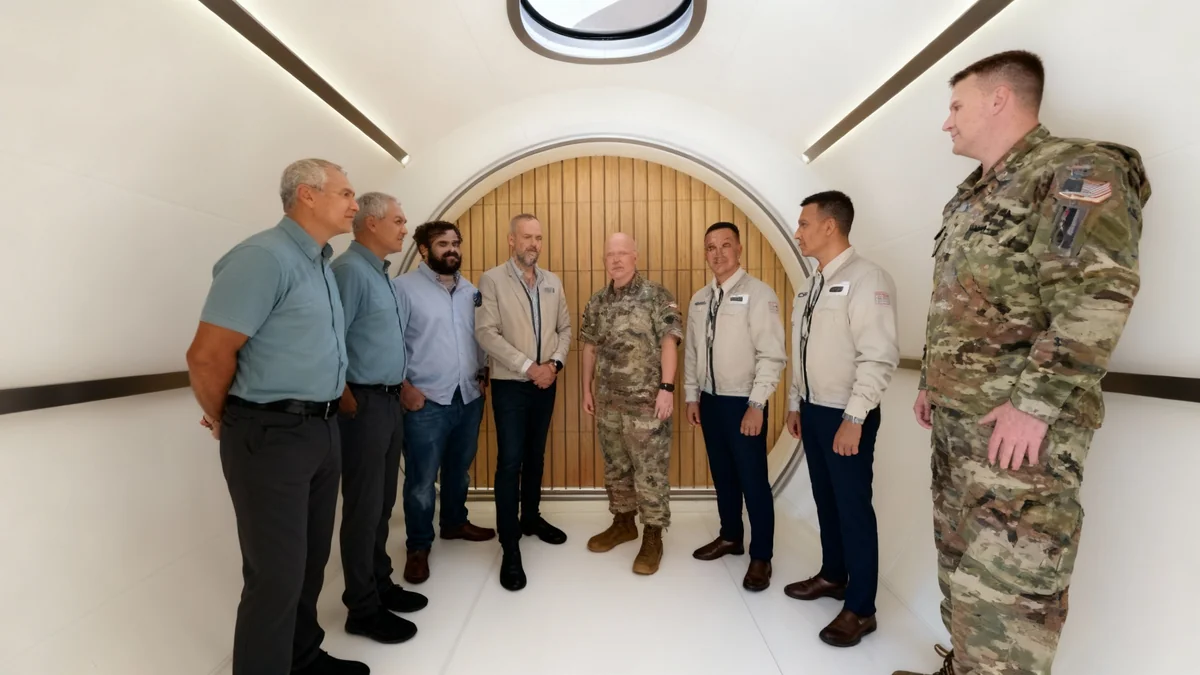A new report from the Democratic staff of the Senate Commerce Committee alleges that NASA, under direction from the White House Office of Management and Budget (OMB), has begun implementing significant budget cuts proposed for fiscal year 2026. This action is reportedly taking place before Congress has approved any appropriations, raising constitutional questions and serious safety concerns voiced by agency whistleblowers.
The report, released on September 29, draws on information from anonymous internal sources who claim the premature implementation of these cuts is creating a culture where safety issues are not being reported. One whistleblower expressed grave fears that this environment could lead to a catastrophic failure, including the potential death of an astronaut within years.
Key Takeaways
- A Senate Democratic staff report accuses NASA of implementing proposed 2026 budget cuts before congressional approval.
- The White House OMB is alleged to be directing these actions, which the report calls a constitutional violation.
- Whistleblowers cited in the report warn of a growing safety risk, with one fearing a potential astronaut death.
- The proposed budget includes a nearly 25% overall cut to NASA, with larger reductions for science and technology.
- These events unfold as a federal government shutdown looms, adding further uncertainty to the agency's operations.
Report Details Premature Budget Implementation
The Senate committee's report outlines a series of allegations suggesting that NASA leadership is actively preparing for the administration’s proposed fiscal year 2026 budget, also known as the President's Budget Request (PBR). This budget proposal calls for a substantial reduction in NASA's funding, which has been largely rejected by pending appropriations bills in both the House and Senate.
According to the document, the directive to move forward with the cuts originated from the OMB in the early summer. The report states, “Based on whistleblower documents and interviews, this staff report finds that the White House Office of Management and Budget (OMB) has been directing NASA — since early summer — to begin implementing the devastating cuts demanded in President Trump’s proposed budget for FY26.”
Verbal Directives and Lack of Paper Trail
A significant claim in the report is that much of this direction is being communicated verbally to avoid creating a written record. This makes it difficult to track the decision-making process. Sources within the agency told committee staff that they were instructed to prioritize only what was included in the PBR.
“If it’s not in the PBR, it does not count,” one unnamed source reported being told by superiors, highlighting the pressure to align with the unapproved budget.
The report notes that there are very few emails or other documents that record meetings where the implementation of the budget proposal was discussed. This includes conversations about the potential impoundment of funds that Congress has already appropriated for the current fiscal year.
Proposed 2026 NASA Budget Cuts
- Overall Reduction: Nearly 25%
- Heavily Impacted Areas: Science and Space Technology
- Congressional Stance: Pending House and Senate bills have largely rejected the administration's proposed cuts.
Whistleblowers Raise Urgent Safety Alarms
The most serious allegations in the report center on the impact these premature budget actions are having on NASA's safety culture. The document links ongoing staffing reductions, including a 20% workforce cut this year from voluntary departures, to a growing reluctance among employees to report safety and security problems.
The report describes “a culture shift where employees are reluctant to make leadership aware of safety and security issues.” This erosion of open communication is a critical concern in an organization where mission success and human lives depend on meticulous attention to detail and a transparent reporting process for any potential anomaly.
One whistleblower conveyed a stark warning to the committee staff about the potential consequences.
“I am very concerned that we’re going to see an astronaut death within a few years,” the individual stated, attributing the risk directly to the changes occurring within the agency.
This sentiment echoes historical concerns, as investigations into past tragedies like the Challenger and Columbia shuttle disasters identified cultural issues and communication breakdowns as contributing factors.
Official Comments and Broader Context
While many sources in the report are anonymous, it does cite public comments from NASA Chief of Staff Brian Hughes made during an agency town hall meeting in June. Hughes addressed the challenge of operating under budget uncertainty, particularly if the new fiscal year begins with a continuing resolution (CR) at 2025 funding levels.
“If we were to wait for all of the congressional process to unfold and get to final resolution to make any movements or do anything, it would probably be considered irresponsible,” Hughes said, suggesting that proactive planning for the PBR was a matter of practical management.
The Role of a Continuing Resolution (CR)
When Congress fails to pass appropriations bills by the start of the fiscal year on October 1, it can pass a Continuing Resolution. A CR temporarily funds government agencies, typically at the previous year's levels, to avoid a shutdown. The concern raised in the report is that NASA may use a CR as a justification to implement cuts from a proposed future budget, rather than maintaining current operational levels as intended by the resolution.
Threat of Government Shutdown Intensifies Pressure
The release of the Senate report is timed against the backdrop of a potential federal government shutdown. With the new fiscal year starting October 1, Congress has not yet passed a CR to keep the government funded. This failure to act creates significant operational uncertainty for all federal agencies, including NASA.
The situation is further complicated by a recent OMB memo sent to agencies. The memo instructed them to prepare to lay off nonessential employees in the event of a shutdown, a more severe measure than the typical practice of furloughing them. This has raised concerns that the administration may use a shutdown to enact more drastic changes to the federal workforce.
As of late September 29, NASA had not issued any specific guidance to its employees regarding a potential shutdown. The agency’s official shutdown plan was last updated in July, leaving its workforce and contractors in a state of uncertainty as the deadline approached.





